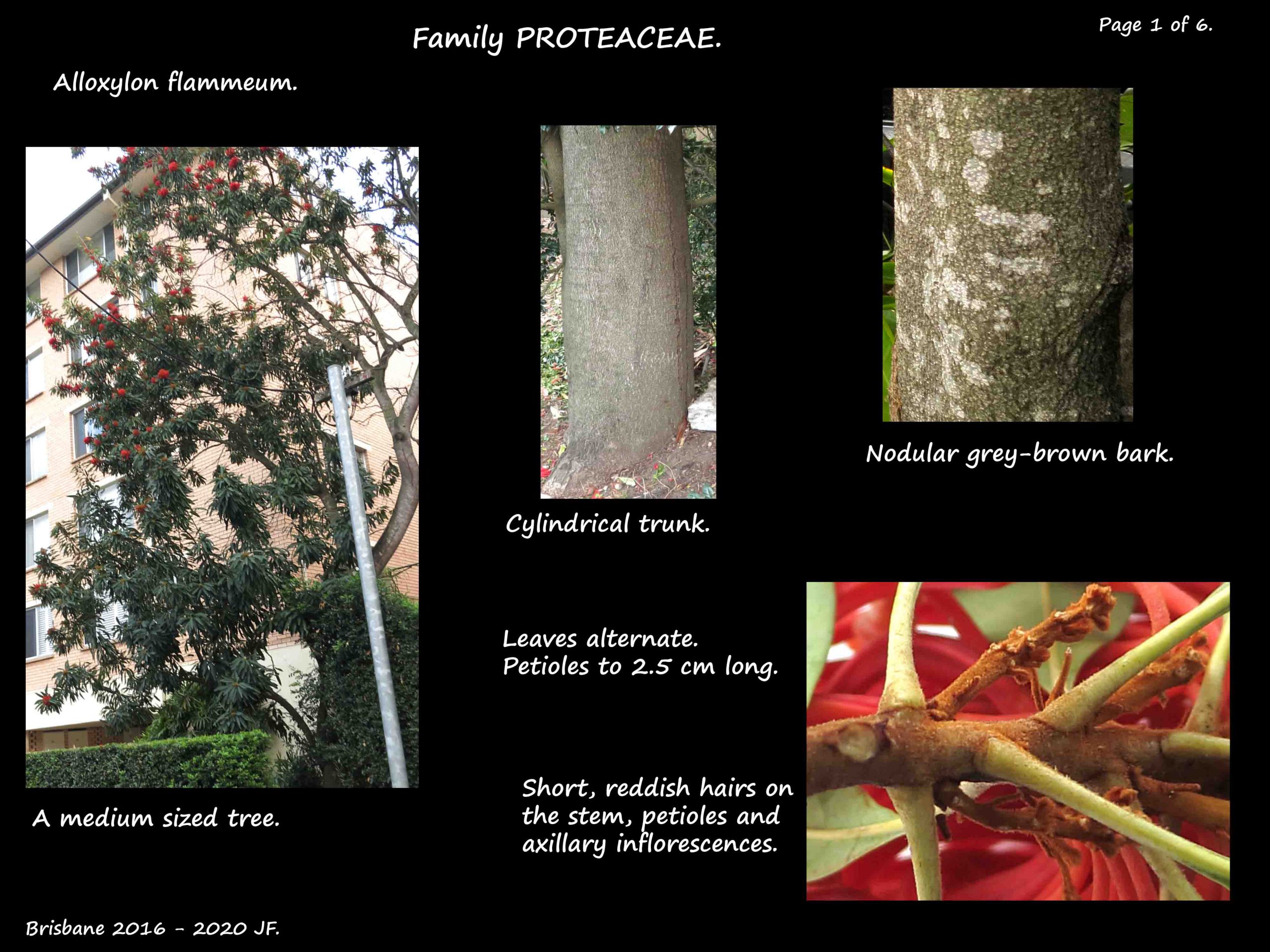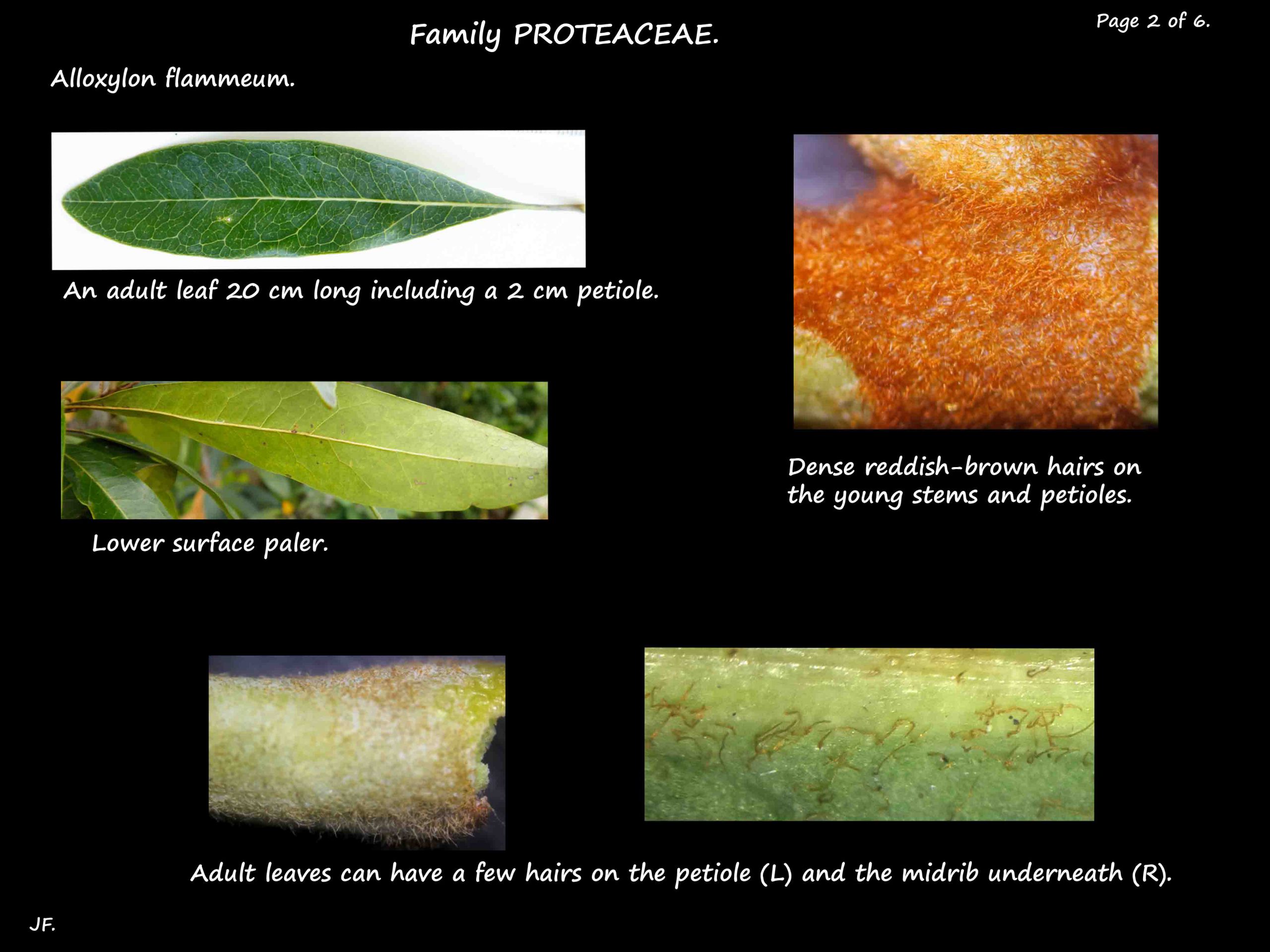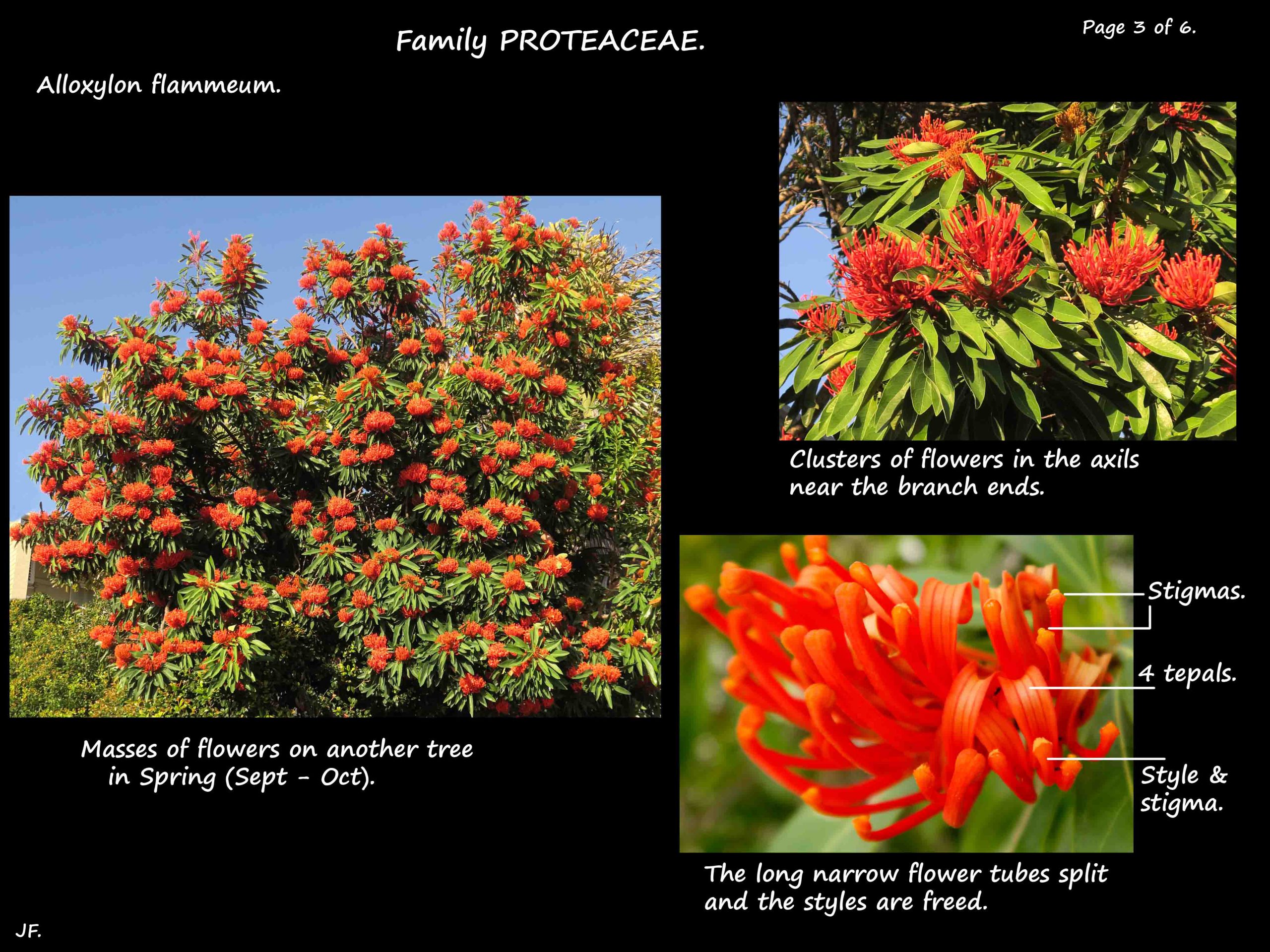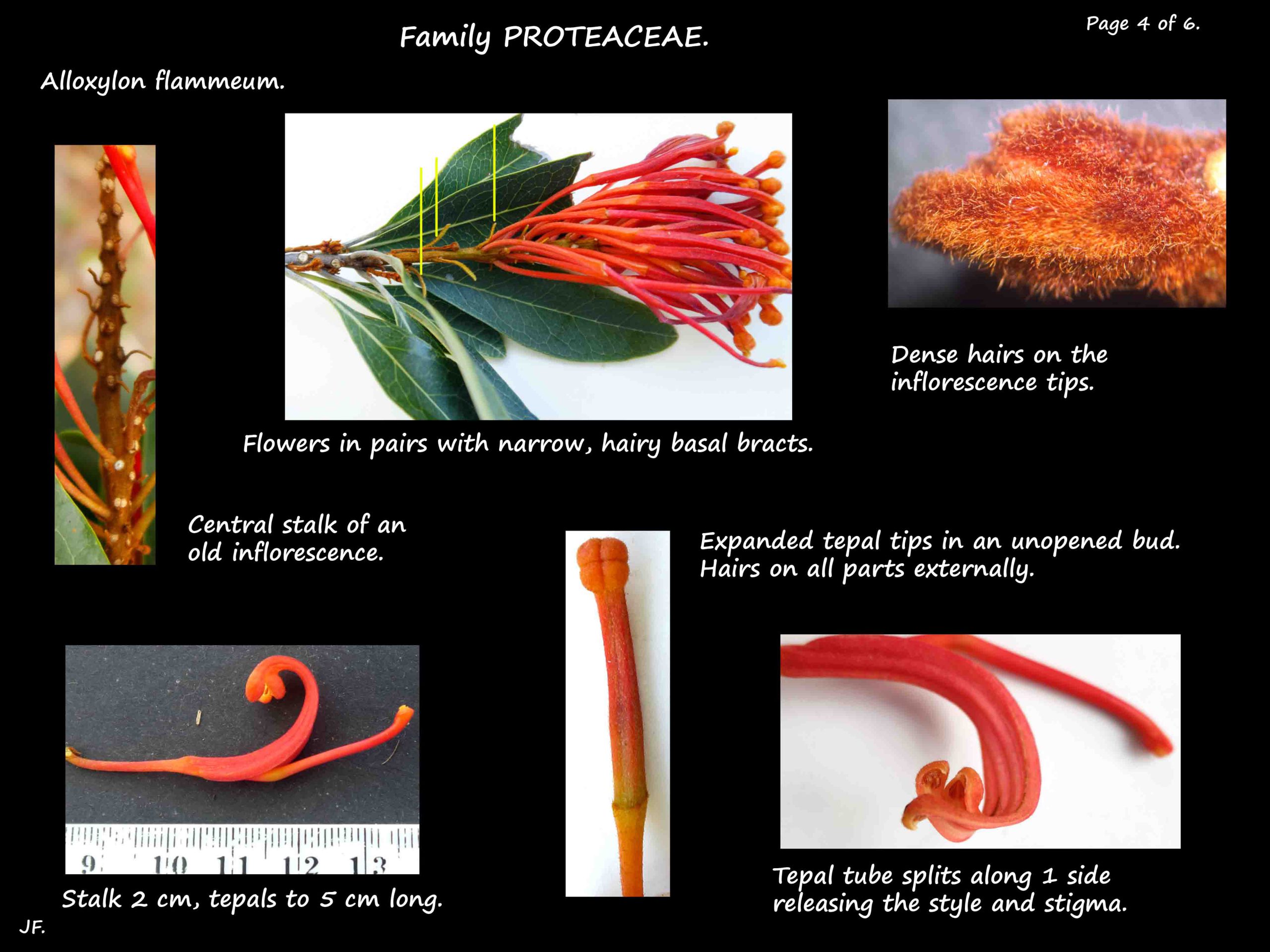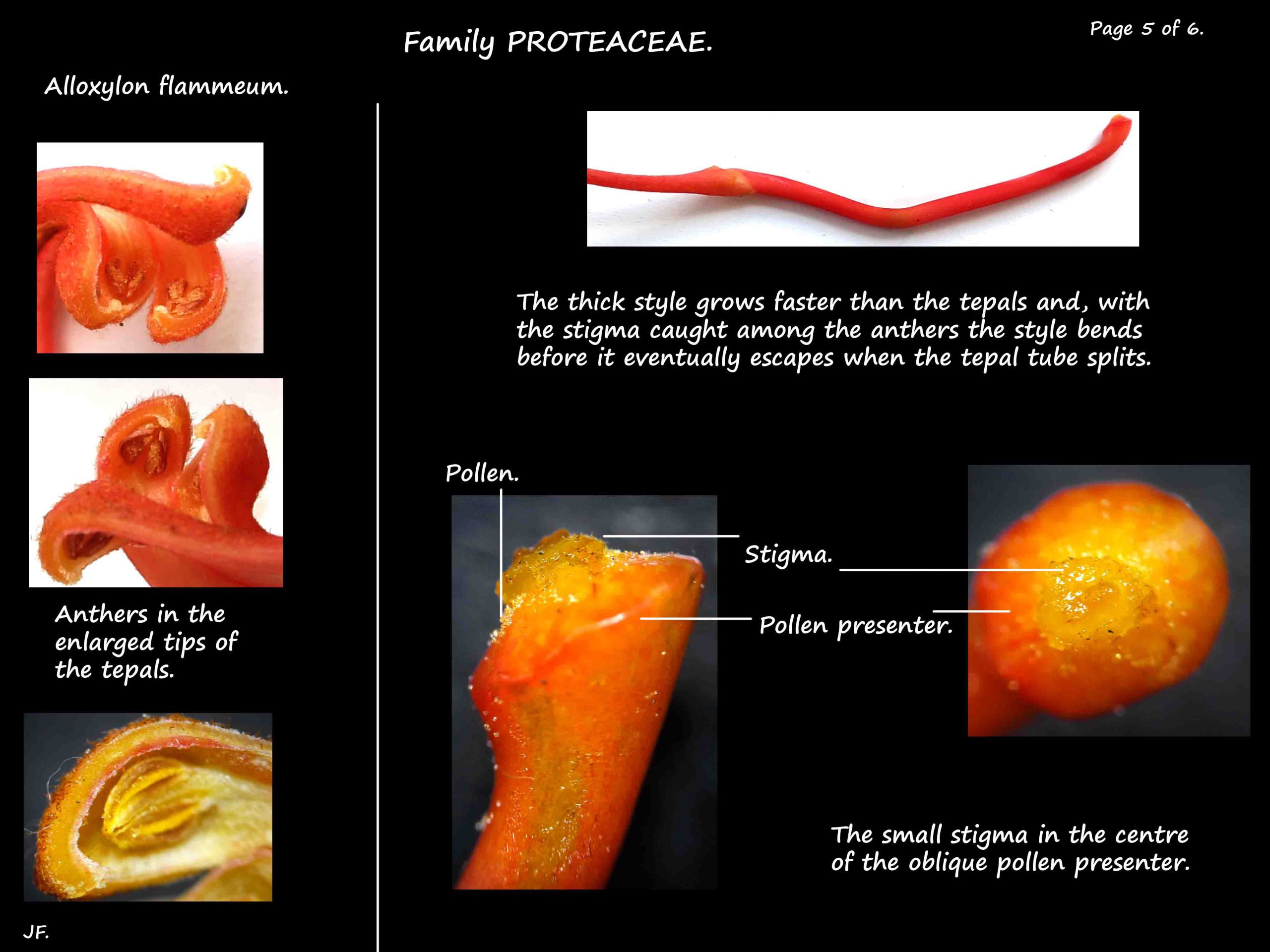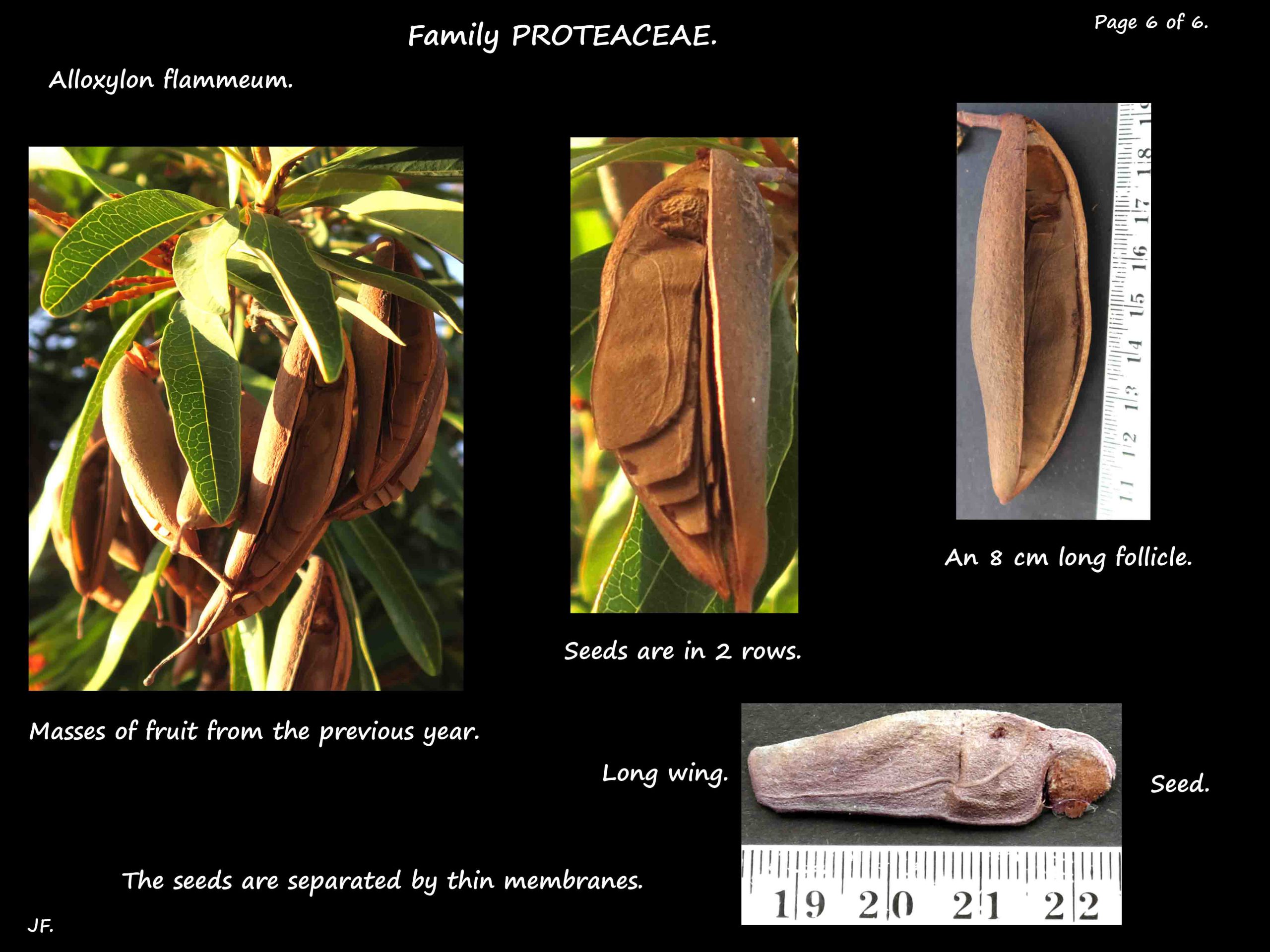Alloxylon flammeum.
Family Proteaceae > Subfamily Grevilleoideae > Tribe Embothrieae > Subtribe Embothriinae.
There are 4 species – Alloxylon brachycarpum, Alloxylon pinnatum, Alloxylon wickhamii and
Alloxylon flammeum which is the type species.
They are native to Australia and seen in public spaces and occasionally in gardens.
Alloxylon flammeum has many common names including Red Silky Oak and Queensland Waratah.
Trees are from 10 to 30 m high with brown lenticels (nodules) on the grey bark on the trunk.
A characteristic feature is the presence of fine reddish hairs on the small branches, young leaves and inflorescences.
Leaves are arranged alternately in a spiral.
Juvenile leaves have two to nine lobes and prominent midveins.
Adult leaves are simple and up to 25 cm long by 5 cm wide.
On stalks up to 2.5 cm long they are obovate or elliptic and usually have blunt tips.
Inflorescences are 50 or so tightly packed flowers on a central stalk.
They are in the axils near the branch tips.
Each cluster of the bright orange-red or red flowers can be up to 7.5 cm across.
The flowers, on pedicels up to 4 cm long, are in pairs along the main axis.
There is a narrow, hairy bract at the base of each pair.
Each flower has 4 tepals up to 5 cm long.
Initially they are all fused into a tube with a expanded club-like end.
The 4 anthers lie in the expanded tips of the tepals.
The superior ovary has a long thick style and a small stigma on an oblique pollen presenter.
With the flower closed the stigma lies among the anthers and pollen is transferred to the presenter.
As the style grows it first bends then separates from the tepals as the tube splits at the top.
The fruit are woody, brown follicles up to 10 cm long.
Each has 8 to 10 winged seeds separated from each other by a membrane.
J.F.
